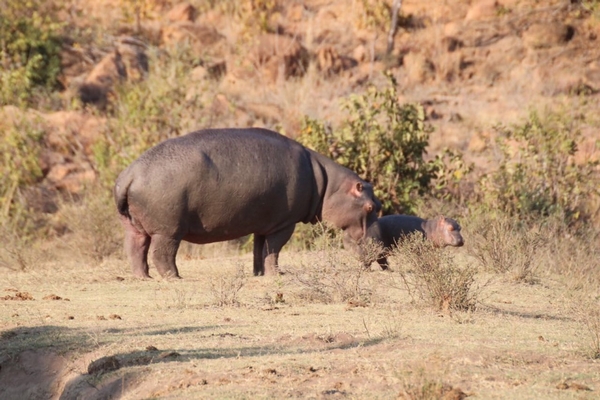Let’s be honest—real-life hippos can look quite ridiculous with their huge faces and swollen bellies supported by four stubby, short legs. But let’s not judge a book by its cover!
The Hidden Danger Behind a Hippo’s Yawn
Most people don’t realize just how dangerous these animals can be. Guests might see a hippo yawning repeatedly and assume the animal is lazy, sleepy, and content, but the trained eye of a ranger recognizes these as threatening signs. Hippos can inflict serious wounds, as often seen on the bodies of males who have competed in territorial fights.
Hippo Facts: More Than Meets the Eye
Did you know that despite living in water, hippos can’t swim at all? They can hold their breath for five minutes, with buoyancy helping them move around efficiently, reducing the load on their bodies and conserving energy. With fewer working muscles, they require less oxygen—a clever adaptation for their aquatic lifestyle.
The Hippo’s Unique Adaptations
Since hippos don’t have sweat glands, staying in water helps them cool down. They have mucous glands that act as natural sun protection. Biochemists have uncovered that this secretion serves a dual role as both sunscreen and antimicrobial protection. Additionally, hippos have excellent insulation with multiple layers of fat up to 12 cm thick, keeping them warm during the winter, allowing them to stay submerged even on cold, windy days.
Night Grazers with a Wide Range
Hippos graze for food at night and can be seen feeding up to 1.8 km away from their watering hole. However, during winter, when the food source around their territory becomes depleted, they are forced to venture even further away in search of sustenance.




